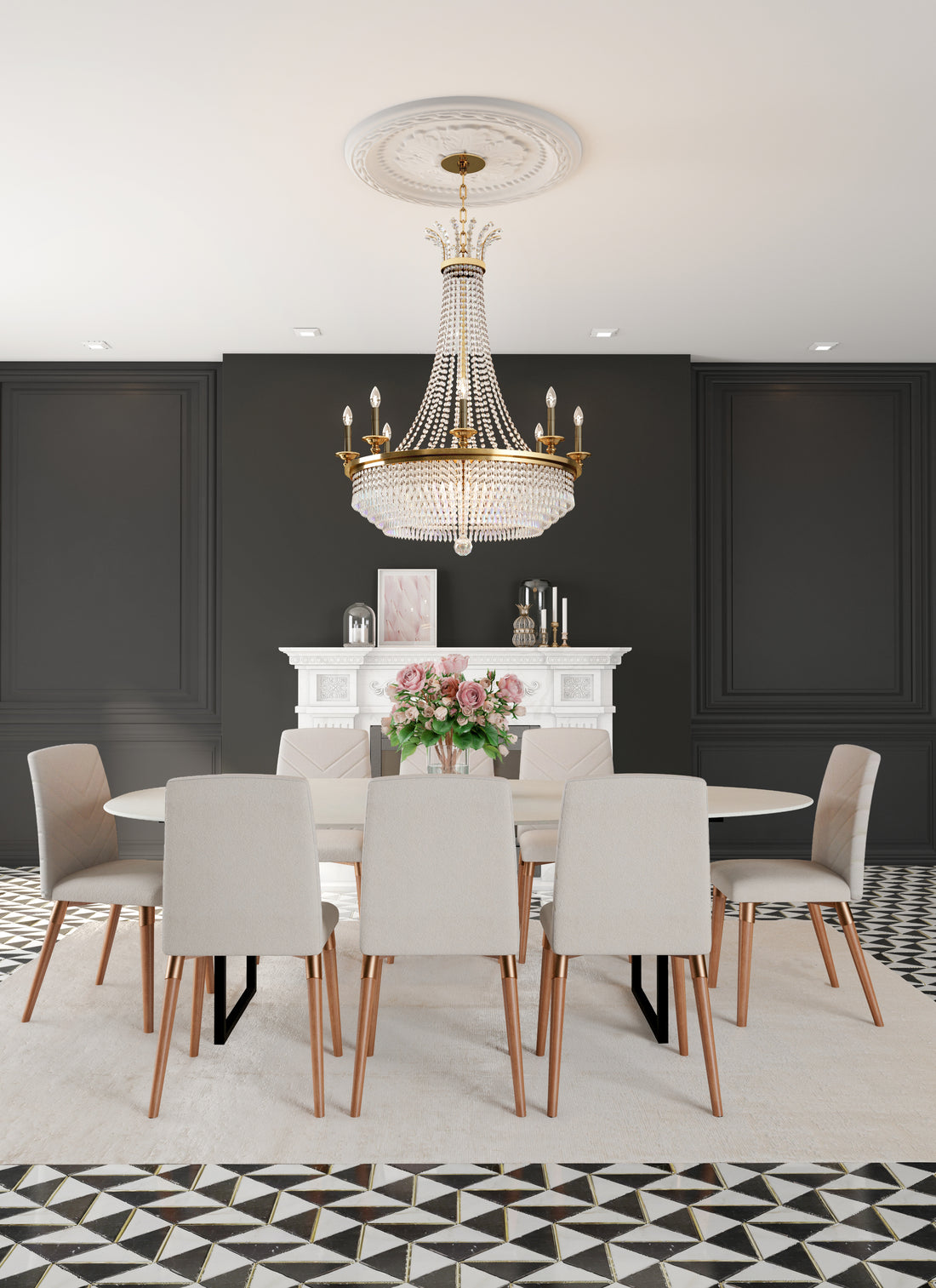Sometimes considered the ultimate interior design broad stroke, transitional design has much deeper roots in the American land space than most other popular design styles. At best, transitional design is the middle-point between traditional inspiration and modern design, creating a timeless balance between both worlds.
The motivation behind a transitional space is the art of adapting classic aesthetics for modern living. Transitional style is a relatively new addition to the design world, with its origins tracing back to the 1950s, emerging in contrast to the postmodernism era. Fatigue from the stark, streamlined elements of modernism and post-modernism led to the longing for a more inviting space, reminiscent of a more traditional style and era.
Below you can see the defining characteristics of Transitional Design, clean lines, subtle ornamentation, warm neutrals - COLOR POPS with the decor adapted from classical design textures. The pendant light is made of natural capiz shell and is layered in textured softly curved rectangles.

Our Cupola Collection features Matte Black and Seeded Glass in this understated yet sophisticated lighting pendant. The unique elongated dome shades and soft industrial styling give an air of personality that’s both modern and slightly edgy.

The transitional color palette is meant to encourage a clean and inviting atmosphere. It relies on warm neutrals, such as taupe, tan, vanilla, cream, or khaki with dark browns or grays as accents and a pop of color.

Transitional style favors the use of organic textures, such as wood, blown glass, velvet, concrete, corduroy, and stone. Since transitional design uses a neutral color palette, texture plays a role in providing visual interest within open spaces.
The below crystal chandelier pendants are a perfect example of textured natural (organic material) crystal beads and knots delicately strung to create the classic empire shape.
 .
.
At the heart of Transitional design is the intention to honor classic shapes, functions and aesthetics while updating any inherent function to meet modern amenities. It’s not simply adding a technique or texture from a more traditional but leaving room for even further future adaptation. You can see this in the chandelier featured below with linen shades and classic arms and body shape.


